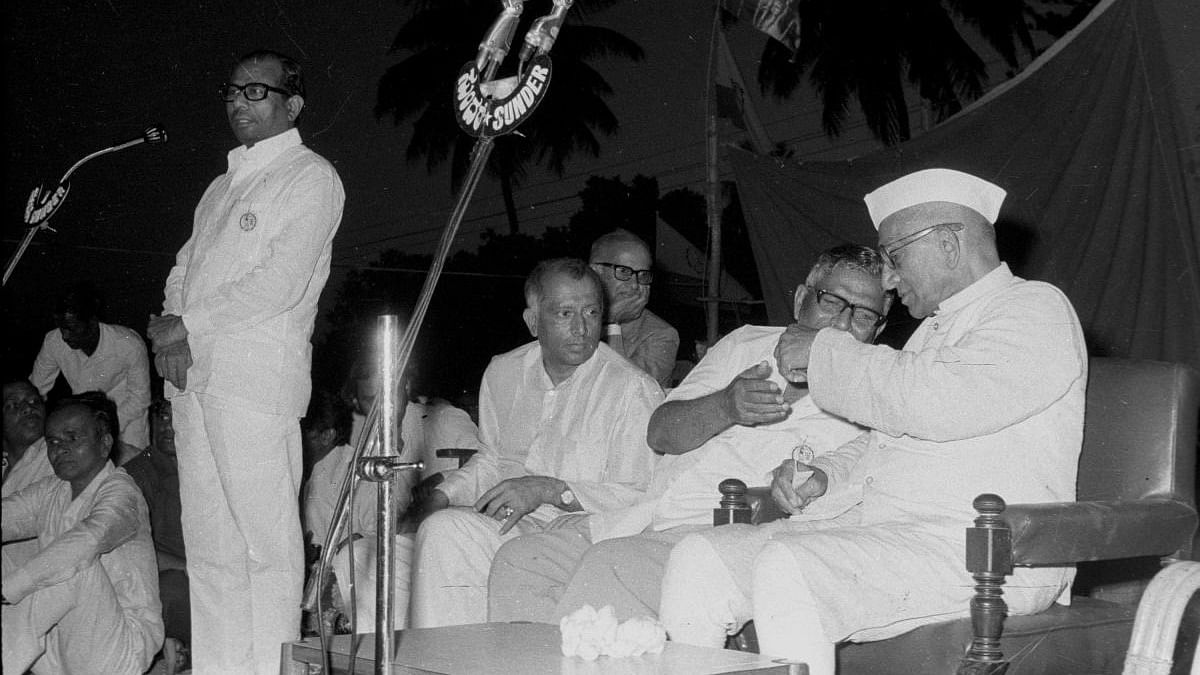
Veerendra Patil trailed Vaijanath Patil by nearly 2,000 votes in the November 1989 elections. Around midnight he told this reporter: “My hat is in the ring, for the CM’s post".
Are you serious? “Haan, kyon?” (Yes, why?). He scraped through with a margin of about 2,000 votes from his home constituency of Chincholi in Kalaburagi district.
Congress was the Opposition in the Lok Sabha, chafing against one of their own, V P Singh, the prime minister in the Janata government. Patil, aiming to become CM for the second time after 18 years, was in an invincible position. He led the 1989 election. His Lingayat community gave Congress a record 178 seats. Janata Dal was down from 139 to a mere 24. The high command had to name him chief minister.
Patil’s only regret was that he could not scrutinise the list of candidates from the comfort of his home or party office because partymen had scrambled all over to beseech him. “I have been chased away from my own house. I am sitting in a hotel and speaking to you,” he told this reporter.
The old-school politician focused on finance and corruption. His finance minister M Rajasekhar Murthy released very little for development activities because he believed the treasury should be full before purse strings could be opened. The Lokayukta Police, headed by a remarkably honest officer, A J Anandan, spared no civil servant.
As Patil’s stock rose, the social axis created by the late Devaraj Urs was disturbed and people from other castes almost secured pre-1972 representation in power. Frustration was growing within the party.
After a meeting of the National Development Council in Delhi, Patil sought an appointment with party president Rajiv Gandhi. The latter kept himself free because the “senior Patilji” was calling on him. Patil exchanged the usual hellos, looked at his watch, said he had to catch a flight and left.
The cold war culminated, months later, in an airport chat Rajiv Gandhi had with reporters in Bengaluru on 7 October 1990. He was visiting because 87 people had died in the riots over L K Advani's Shilanyas yatra, a situation Karnataka had never experienced. Patil’s health had deteriorated and even senior colleagues were unaware of his status.
N C Gundu Rao of Deccan Herald asked Gandhi: When will the people of Karnataka get a government that is functional? “In four days,” he said. “What” asked this reporter. “You asked a question, take the answer. Patilji is really very ill. I have just met him,” he explained.
That evening, the paralysed Patil faced the Doordarshan camera and mumbled he would like an election in the legislature party. The party high command instead chose S Bangarappa, a “physically fit” backward class leader.
Bangarappa slid in like a “jolly good fellow”, as veteran journalist V N Subba Rao commented. He listened to bureaucrats, some of whom had been arraigned by the Lokayukta Police, changed the names of some programmes like Janata housing scheme to ‘Ashraya,’ launched ‘Vishwa’ that supported small-scale sector startups at the district-level.
On a day when 10 police station areas were under curfew due to the riots over sharing Kaveri waters with Tamil Nadu, he flew to Pune in a private plane late at night for concert by the Gavai brothers. In an interview he gave this reporter later, he explained he is “Sthitha pragna. It is rock-like, like Gomateshwara. Comments that are not facts, I receive like Gomateshwara. They cannot touch me.”
His misplaced faith in bureaucrats led to the Classik Computer deal. It was investigated by the CBI after the then union home minister S B Chavan personally questioned the bureaucrat as well as the CM. The TG halli reservoir had to be protected from land developers on the directions of the Supreme Court. M Veerappa Moily replaced Bangarappa. But the “solillada saradara” (the undefeated leader) Bangarappa continued to get elected from Sorab in Shimoga district irrespective of which party he contested from - BJP or Samajwadi or the Karnataka Congress Party which he launched.
Moily introduced the Common Entrance Test (CET) for professional courses in the state. His reservation policy that included Muslims was based on a socio-economic study conducted by the state minorities' commission.
Nevertheless, the game for the CM’s post became Congress’ nemesis as Karnataka voted to end political instability.